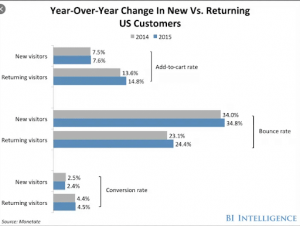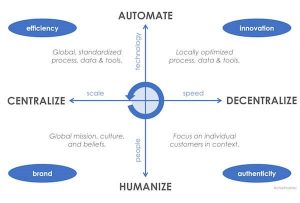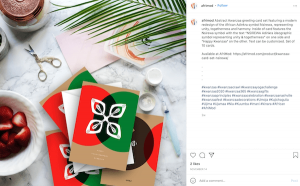Over the last decade the shopping journey has been redefined. Where once it started with a trip in the car or on the bus, today the chances are that we’re checking availability on a mobile device, ordering online for home delivery or popping into a shop when it suits us to collect an item we’ve ordered from our work computer.
Information, choice, and power have moved firmly into the hands of the consumer since 2005, and in the retail industry, a revolution is underway as traders adapt to this dawning reality. At Internet Retailing, we’re thinking in decadian terms as we approach our 10th annual conference. Here we map key disruptions that have so changed the landscape over the last 10 years – and take a look ahead to the decade to come.
What shops do
Back in 2005, shoppers could choose between buying online or from the store. The two operated in distinct, competing, silos that the customer could access only separately. Today these distinctions are disappearing as retailers work to perfect the art of offering visitors a seamless customer journey that remains consistent whether the visit is to the store or the website.
Some retailers are bringing digital into the store, showing customers their extended range through in-store tablet computers, kiosks or other digitally-enabled items, or enabling them to collect their online order in the shop. Others are taking the expertise that they offer in-store and putting it onto their internet site, whether through ‘how to’ videos or customer self-help and FAQ pages. Fashion retailer New Look, for example, says 28% of its online orders are picked up in store using click and collect – and that 19% of those customers who pick up in store then make a further purchase. This helped to drive a 34% rise in ecommerce sales in its financial year to March 28.
Looking ahead, we expect the journey across sales channels to become ever easier for the shopper as retailers enable them to shop in the ways that suit them best.
Getting mobile
The first smartphone, the Apple iPhone, was only released in 2007, but by last year IMRG figures (1) showed more than half of online website visits originate from a mobile device. Retailers such as John Lewis, the first UK department store group to offer free wi-fi back in 2011 and an Elite retailer in Internet Retailing’s IRUK500 research, have helped foster the growth of mobile commerce, encouraging shoppers to use their smartphones to bridge the information gap between the store and online, checking where an item is available, and how fast it can be delivered to them.
This year, Argos, another Elite retailer in the IRUK500, is thought to be the first UK retailer to hit the milestone of turning over £1bn a year from transactions involving a mobile device. Betrand Bodson, chief digital officer at Argos’ parent company the Home Retail Group, said at the time that “the true value of mobile is as a connector between the virtual and the physical world.” He added: “At Argos, our customers like to shop cross-channel and 90% of purchases touch a store, with 35% using the convenience of Check and Reserve.”
Recent Forrester research (2) suggests that by 2020 53% of all European retail transactions will involve more than one sales channel, including online. With mobile ever more likely to act as a bridge between channels, we’d expect more retailers to ensure they’re enabling their customers to use the devices that best work for them. Domino’s Pizza (UK & Ireland), for example, reported this summer that its mobile app was now its most popular sales channel.
Power to the customer
Shoppers no longer need to hope for the best when they decide to make a purchase. Where once the shopping trip meant touring stores that might sell something they wanted, today digitally-enabled consumers are checking online, gathering opinions from people like them over social media channels that simply weren’t widely available a decade ago, comparing prices, and reading reviews, before making a purchasing decision. From there it’s a relatively easy step to check availability at the store or online, reserving for collection or buying for home delivery. House of Fraser, for example, enables its customers to check stock availability, read online reviews in the store, and find information about products displayed on a beacon-equipped mannequin through its latest mobile app.
Looking ahead, social media channels Twitter and Facebook are now starting to enable commerce, trialling buy buttons that enable the whole transaction to be completed from their site. Expect to see social commerce take off in coming months and years as customers start to buy at the point of inspiration, rather than saving a purchase for a more convenient moment.
The tenth annual Internet Retailing Conference (IRC 2015) will be held on October 14 2015 and takes a ‘decadian’ approach to ecommerce and multichannel retail, exploring the key drivers of the change over the past 10 years, and looking ahead to the next 10 years.
(181)







